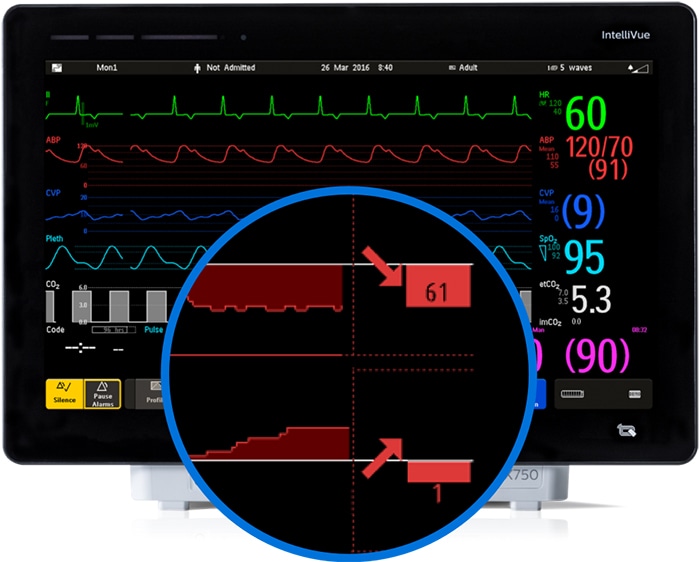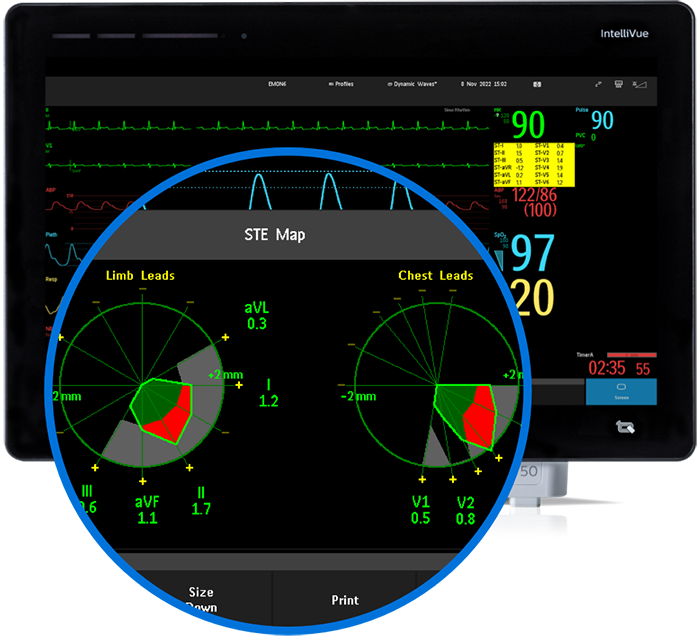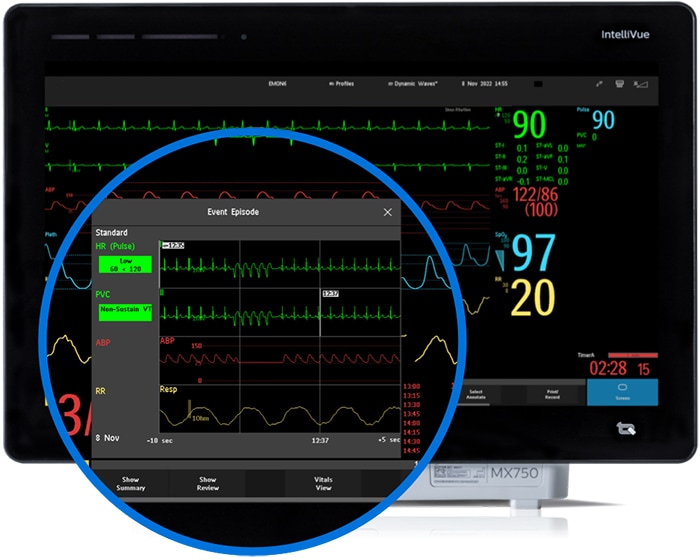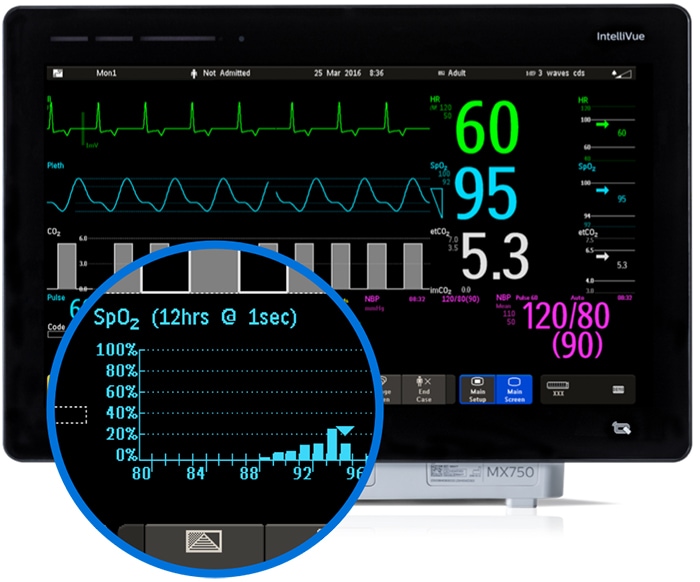Advanced data visualization and insight tools that give clinicians clear, contextually rich physiologic data at the bedside and central station
Clinical decision support tools have never been more important to overburdened acute care teams. Clinicians may only have time to briefly scan a monitor so information needs to be presented as simply as possible. Philips clinical decision support tools are designed to reduce cognitive load, recognize patient deterioration and give speedy feedback on whether therapeutic interventions are working.
The Horizon Trends tool gives clear feedback on the patients’ current status and how they are trending for each measured parameter. Instead of using sound to alert the user to a deterioration in the patient’s condition, deviation bars and trend arrows display patient status in relation to a target goal value.
ST Map collects ST values and trends from all measured chest and limb leads. It provides the patient’s ST values in a multi-axis diagram that allows clinicians to quickly see ST changes and their location in the heart.
1. Sangkachand P, et al. Continuous ST-Segment Monitoring: Nurses’ Attitudes, Practices, and Quality of Patient Care. Am J Crit Care. 2011;20(3):226-238
Advanced Event Surveillance offers patient-specific notifications based on an analysis of the vitals – and thresholds – clinicians choose. Nurses are notified only when worrisome patterns are detected.
2. Bitan Y, O-Connor MF. F1000Res.2012;2-12;1:45.: N=564 cardiac surgery ICU patient days. Positive predictive value was 171/221 = 0.773.
Histograms allows clinicians to assess how patients are responding to therapy.
How can you easily put Philips Clinical Decision Support solutions to work?
